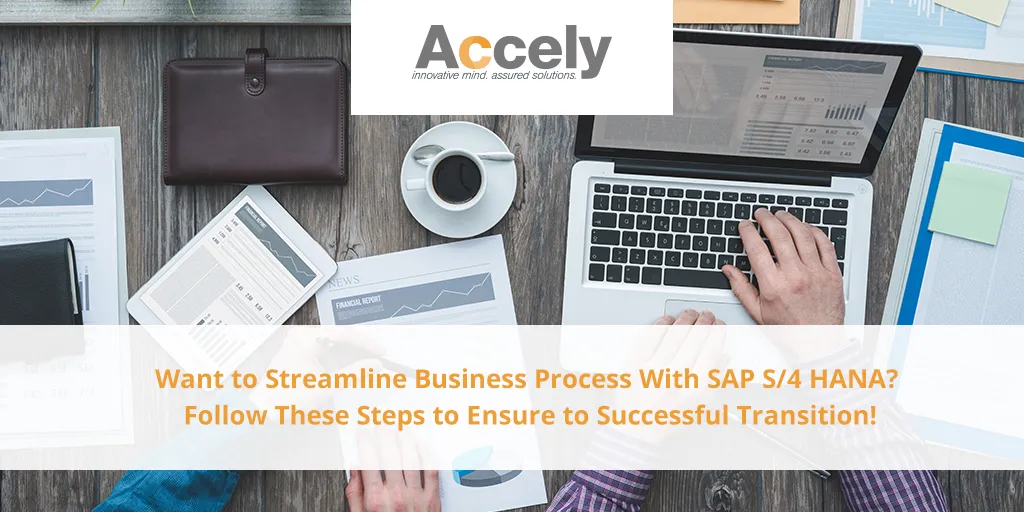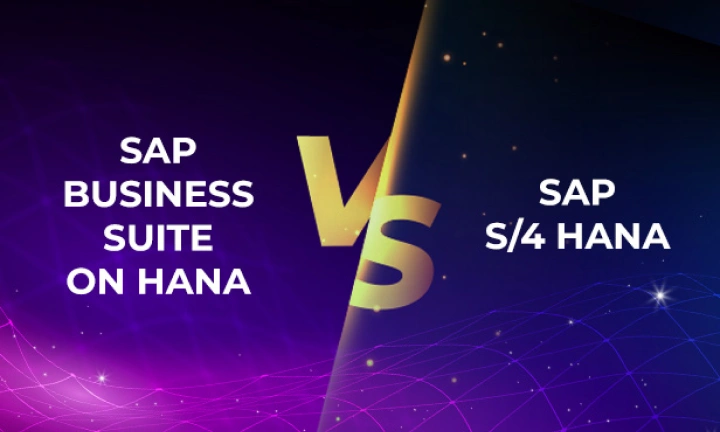Earlier in February 2017, a public cloud version of SAP’s flagship product- S/4HANA ERP Suite was publicized as a pivotal component of its digital transformation initiative.
The product, called SAP S/4HANA Cloud, places customers in a self-service model and uses AI and machine learning to “smarter “the software than its predecessors on-site. At the February briefing of the analyst, SAP emphasized the product as crucial to its cloud shift.
What Is Sap S/4Hana Cloud?
SAP S/4HANA Cloud is a SaaS-based solution designed as a service to provide key business process automation. It is designed on the basis of predefined blocks of simultaneous user levels–together with virtual memory capabilities–that allow companies to subscribe to a starting level and then scale up based on their use.
AP S/4HANA helps organizations improve transparency, productivity, and agility across the board. It also enables to report more efficiently in real time and gain greater visibility in daily activities to facilitate faster decision-making.
Moreover, the key advantages of SAP S/4HANAs highlighted by respondents–improved user experience, simplification and the development of a progressive digital platform–are consistent with SAP’s mission statement for the core products.
In addition to these added value, SAP S/4HANA could help organizations increase transparency, productivity, and agility across functions. The product could also enable organizations to report more efficiently in real time and to gain greater visibility in daily activities to facilitate faster decision-making.
Why Implement S/4HANA?
In the fast-paced, competitive digital world today, hesitation or failure to transform can be a business killer. And few industries, if any, are exempt, especially if your industry has a low entry barrier and/or you rely on a large, legacy business model to generate and manage most of your revenue.
Contrary to popular opinion, your greatest digital threat does not come from “Unicorns”— private companies (mostly startups) valued $ 1 billion or more— but from established competitors:
As reported in Business2Community:
- 57 percent of executives experienced “moderate” or “severe” competitive pressure from well-established digital products and services.
- In the next three years, 69 percent of executives anticipate threats from existing firms, compared with 58 percent who expect start-up challenges.
- According to WSJ, the topple rate, a measure of how fast companies lose their leadership position, has increased by nearly 40 percent since 1965. The tenure of S&P 500 companies was 61 years in 1958; it is now 18 years. If these trends continue, 75 percent of S&P 500 companies over the next 15 years will have changed.
- According to Digitalist Magazine, 50% of Fortune 500 companies have fallen off the list in the last 12 years and 96% of the FTSE 100 companies that were founded in 1984 are no longer present.
- Former Cisco CEO John Chambers, also reported in Digitalist, forecasts that 40 percent of companies will collapse if they fail to make a successful digital transformation.
S/4HANA is transforming companies into the digital era whilst offer a swift approach to evolve consistently. As the platform matured, more customers are looking to embrace the journey through successful implementation.
Steps that ensures a smooth Transition to SAP S/4HANA
- Get a clear picture of your present status
Start by evaluating the current SAP environment and the migration value to S/4HANA. In this step, you will decide which pieces to move to S/4HANA. You will also determine which SAP systems you must replace or withdraw.
Then check out the S/4HANA Value Advisor to find out if the suite meets your every need. S/4HANA offers a variety of business lines of applications. You may find features that users want, but you cannot supply them through your current ERP setting.
Look at your existing environment from a business point of view and determine which pieces you want to carry on. You can find value in your heritage environments, but leaving behind these systems allows you to leverage new business models and drive more value for the company.
- Build an Agenda
Creating a roadmap pays off in the long run when it comes to building a business case for S/4 SANA. It offers you with a clear vision on how this product helps to meet your business needs and achieve goals.
Following are the questions that you are required to access thoroughly in this step:
Which S/4 functions are reliable for my business needs?
What system components do I need to migrate to S/4?
What is the best time to migrate all these system components?
How will it impact my existing SAP environment? Is it compatible with the current system or require any upgrades?
How the changes are going to impact third-party systems and applications? Are the third-party applications needs to upgrade or is it possible to achieve the same functionality with S/4HANA or other SAP products?
Do the current systems have any functionality that is not available in SAP S/4HANA? If yes, what steps should be taken to restore it?
How will I proceed with gap analysis? Will I be able to handle it internally? Or require a reliable team who can offer custom code or an application to fill those gaps?
- Get Started With a Portfolio To Build an Effective Architecture
Many ERP systems have been built for years now and that’s why they are not eligible to support today’s agile business applications.
Lately, SAP has enhanced its technology to provide room for higher accessibility and performance. And the enterprises carrying their daily operations on dated systems are not able to make the most of s/4 benefits. So, it is essential to know the existing SAP is designed and know whether it needs a refresh or not.
It’s indispensable to incorporate the business into any choices. You may feel that a S/4HANA migration falls soundly into IT’s domain. While your IT group can settle on numerous choices –, for example, choosing manufacturers – the business needs a state in your administrations. In the event that you can’t give business clients what they need, they will go somewhere else and make a shadow IT confusions.
Additionally, think about how to increase the productivity of employees with remote or portable access to your back-end situations. S/4HANA supports highly accessible, remote access. It enables corporate explorers to effectively get to their information from their cell phones, rather than hauling around a PC with a VPN customer that never takes a shot at in Wi-Fi.
- Offer Required Training to the team
Try not to think little of the extra specialized information required for S/4HANA. Relocating to S/4HANA presents new advances, UIs, and procedures– all of which require preparing.
Your inner IT staff likely are likely less trained in SAP. Make sure you consider, the amount of their insight conveys forward into S/4HANA? What preparing does your inside IT group require? Does it bode well to choose an outer accomplice to oversee parts, or all, of your SAP condition?
Also, consider how a S/4HANA implementation affects your end users. S/4HANA changes the user experience, so you must provide training on your new systems and processes.
Conclusion
Think about how a S/4HANA usage influences your end clients. S/4HANA changes the user experience, so you should give training first on your new frameworks and procedures. Want to rely on the experts for SAP S/4 implementation? With more than 18 years of experience, the team at Accely will help you get the job done swiftly, professionally and cost-effectively. Reach us today at info@accely.com to get started!





